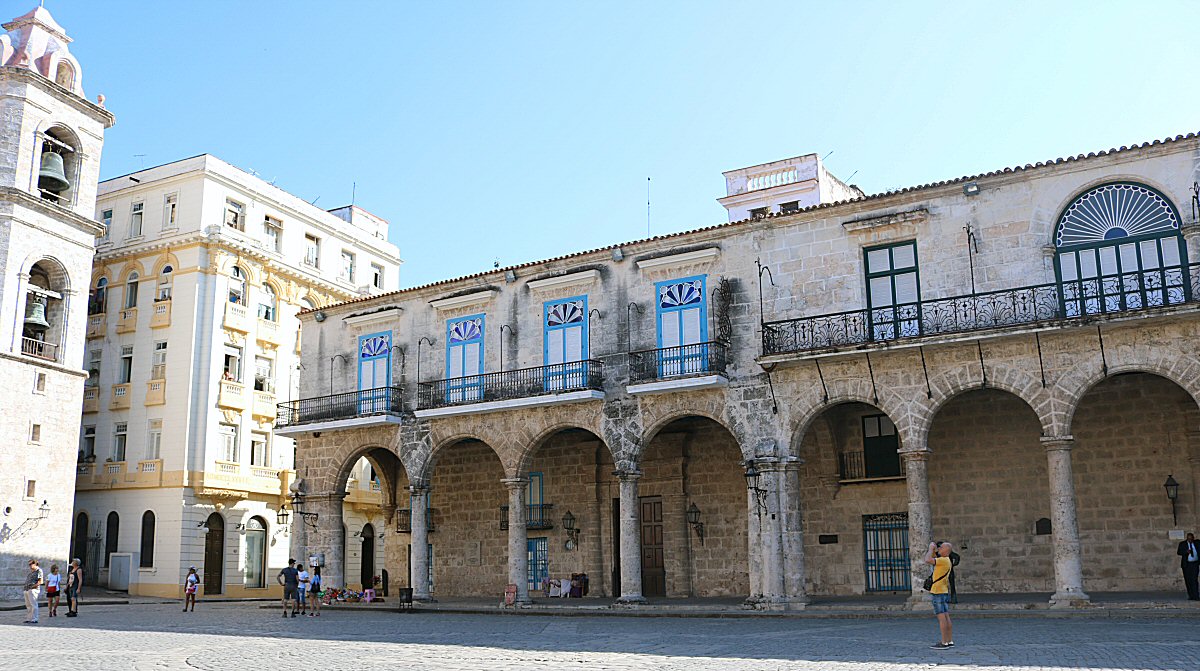
The Palacio de Lombillo is located on the Empedrado street #151, occupying the corner on the east side of the Plaza de la Catedral.

HISTORY
The colonial mansion that occupies the northeastern corner of the Plaza de la Catedral, was built on the land that belonged to the Alonso Hernández y Catalina. He built his mansion in the first quarter of the 17th century by demolishing an old house existing there before. When he wanted to enlarge his house by adding a corral, he could not overcome the objection of his neighbor Sanchez Pereira, so that the town council denied his request to include about seven meters from the Plaza de Ciénaga (currently Plaza de la Catedral) to his house for this purpose.
At the beginning of the 18th century, the Havana councilor José Pedroso y Gonzalez de Carvajal (1679-1732) that was also official treasurer of the Royal Treasury of San Augustin de la Florida took the possession of the mansion. Upon his death, his nephew Francisco Pedroso Florence (1720-1786), first Earl of Pedroso y Garro, ruler of the Villa and Court of Madrid, inherited the house. He was one of the richest landowners in the region. Thus, for more than a century the house stayed as the property of the Pedroso family. Thereafter, for a long time, the house fell into the hands of several persons.
During the British siege in 1762 a bomb destroyed a part of the hall of the house. In 1872 Maria de la Concepción Montalvo y Pedroso, one of the granddaughters of Francisco Pedroso Florence, was awarded the house, when she married José Maria Lombillo y Ramiréz de Arellano, one of the sons of the Count of Casa Lombillo. Maria de la Concepción Montalvo y Pedroso remodeled the house and used it as her residence and two years later as the office of the San Gabriel sugar factory, owned by her and her brother, the third count of Casa Lombillo that never lived in this house.
In the time of the last heiress, Maria de la Concepción Montalvo y Pedroso, the house had its greatest splendor, as it witnessed many celebrations and cultural evenings attended by aristocrats and intellectuals of the time, as well as foreign visitors. The house was very popular by the Wednesday chats. The splendid life in the mansion led it to be called as Casa del Conde de Lombillo or Palacio de Lombillo, alhough the Counts of Lombillo were residing in another mansión located in Plaza Vieja.
The building was occupied by a law firm of notable lawyers of the time in 1903, such as Dr. Ricardo Dolz. In 1936 it became the seat for the Municipal School of Music, and in 1937 the headquarters of the National Defense Secreteriat. From 1947 until his death in 1964, it was the office of Dr. Emilio Roig de Leuchsenring (1889-1964), the first historian of the city. After moving of the Oficina del Historiador de la Ciudad de la Habana (the Office of the Historian of the City Havana) to the city museum (Palacio de los Capitanes Generales), it housed the offices of the Plan Maestro de Revitalización Integral de La Habana (Master Plan of Integral Revitalization of Old Havana) and the Opus Habana, the interdisciplinary magazine of the Office of the Historian of the City of Havana, dedicated to the cultural heritage and especially to the rehabilitation of Old Havana until today. Since 1982 the Palacio de Lombillo is declared a World Heritage Site by UNESCO.